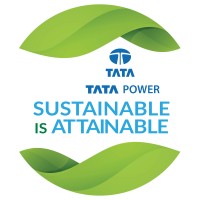TATA Power
Tata Power, Bombay House, 24 Homi Mody Street, Mumbai - 400 001, Mumbai, IN, 400009
Last Update: 2025-11-24
Tata Power is one of India’s largest integrated power companies and together with its subsidiaries and jointly controlled entities, has an installed/managed capacity of 14,294 MW. The Company has a presence across the entire power value chain - generation of renewable as well as conventional power including hydro and thermal energy, transmission & distribution, and trading. With 5,434 MW of clean energy generation from solar, wind, hydro, and waste heat recovery accounting for 38% of the overall portfolio, the company is a leader in clean energy generation. It has successful public-private partnerships in generation, transmission & distribution in India viz: Powerlinks Transmission Ltd. with Power Grid Corporation of India Ltd. for evacuation of Power from the Tala hydro plant in Bhutan to Delhi, Maithon Power Ltd. with Damodar Valley Corporation for a 1,050 MW Mega Power Project at Jharkhand. Tata Power is currently serving more than 12.9 million consumers via its Discoms, under a public-private partnership model viz Tata Power Delhi Distribution Ltd. with the Government of Delhi in North Delhi, TP Northern Odisha Distribution Limited, TP Central Odisha Distribution Limited, TP Western Odisha Distribution Limited, and TP Southern Odisha Distribution Limited with Government of Odisha. With a focus on sustainable and clean energy development, Tata Power is steering the transformation as an integrated solutions provider by looking at new business growth in distributed generation through rooftop solar and microgrids, storage solutions, EV charging infrastructure, ESCO, home automation & smart meters et al. In its 108 years track record of technology advancements, project execution excellence, world-class safety processes, customer care and green initiatives, Tata Power is well poised for multi-fold growth and is committed to lighting up lives for generations to come. For more information visit us at: www.tatapower.com
NAICS: 22
NAICS Definition: Utilities
Employees: 12,962
Subsidiaries: 1







